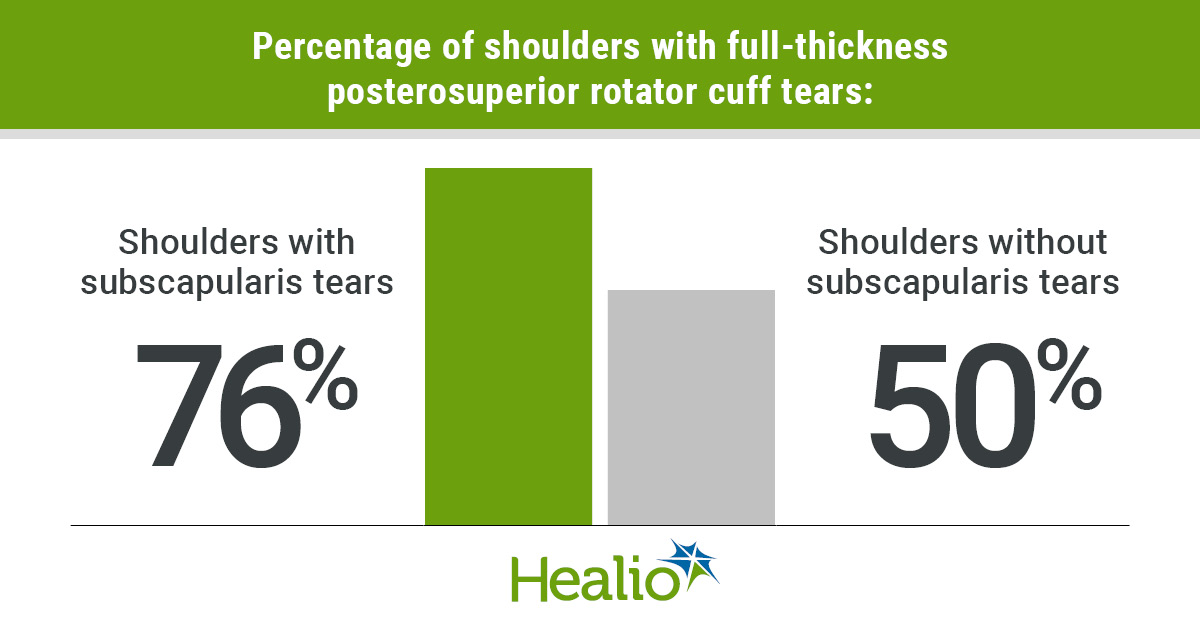Posterosuperior rotator cuff tear size may lead to subscapularis pathology
Click Here to Manage Email Alerts
Published results showed a significant relation between the size of the posterosuperior rotator cuff tear with the development of subscapularis and long head of the biceps pathology.
Researchers analyzed shoulder ultrasonography and clinical evaluations annually among 354 patients with asymptomatic rotator cuff tears to assess for the presence of subscapularis, long head of the biceps and posterosuperior rotator cuff pathology and pain development.
During a median follow-up of 5 years, results showed 14% of shoulders developed subscapularis pathology, of which 83% had partial-thickness tears. Researchers found no association between age, sex and hand dominance with subscapularis pathology. Overall, 76% of shoulders that developed subscapularis tears had concomitant full-thickness posterosuperior cuff tears compared with 50% of shoulders that did not develop subscapularis tears, according to results. Researchers noted shoulders with subscapularis tears also had greater posterosuperior cuff tear width at the time of enrollment and both tear width and length at the time of diagnosis of subscapularis pathology.
Of the 34% of shoulders with long head of the biceps pathology, results showed 63% had dislocation/subluxation. Researchers also found shoulders with subscapularis tears had a significant greater proportion of long head of the biceps pathology. Pain developed in 67% of shoulders with subscapularis tears vs. 45% of shoulders without subscapularis tears, according to results. Researchers noted an association between concomitant posterosuperior cuff tear enlargement with greater risk for pain development.

Taken together, findings from this study provide an improved understanding of the natural history of degenerative rotator cuff disease that can be valuable in diagnosing and treating this common clinical entity,” the authors wrote. – by Casey Tingle
Disclosures: Keener reports he received research support from the NIH; is a consultant for Arthrex, Shoulder Innovations and Wright Medical; receives royalties from Shoulder Innovations and Wright Medical; and is the assistant editor of the Journal of Shoulder and Elbow Surgery. Please see the study for all other authors’ relevant financial disclosures.

